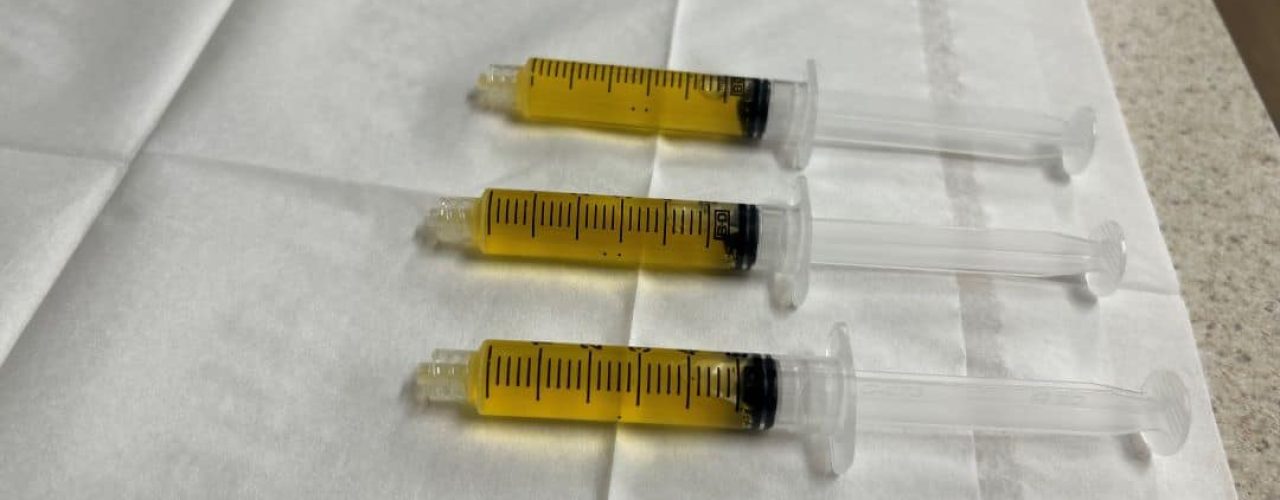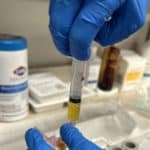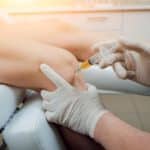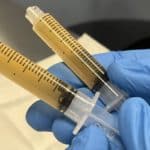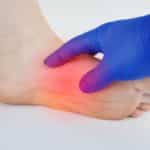Curious about PRP injection but not sure of the risks and side effects? Discover the essential information you need to know before undergoing this popular treatment.
Understanding the Risks of PRP Injections
Platelet Rich Plasma (PRP) Therapy has recently gained popularity in the field of sports medicine as a treatment option for various conditions, such as chronic tendon injuries. PRP treatments involve injecting concentrated plasma into the injured area to promote the body’s natural healing process and tissue regeneration.
While this treatment is generally considered safe and minimally invasive, like with any medical procedure, it has risks. In this blog, we will be exploring the common side effects of platelet rich plasma therapy and how to manage them, helping you make an informed decision about your treatment.
The Benefits of PRP Injection
Platelet rich plasma (PRP) injections offer a multitude of benefits, making them an increasingly sought-after treatment option. These injections have shown promising results in promoting tissue regeneration and accelerating the body’s natural healing process. PRP injections have effectively treated various conditions, including chronic tendon injuries, osteoarthritis, sports injuries, and even hair loss.
The typical PRP injection process involves taking a blood sample from the patient, which is then processed to separate and concentrate the platelet rich plasma.
Plasma is the fluid component of the blood, which allows red blood cells, white blood cells, growth factors, and platelets to circulate around the body. Platelets are blood cells that prevent any excessive bleeding by forming blood clots to seal any injured areas, such as when a blood vessel is damaged after a cut.
This concentrated platelet rich plasma is then injected into the affected area, delivering a high dose of growth factors and cytokines that stimulate the body’s natural healing process, promoting regeneration and cell growth. This targeted approach can provide pain relief, improve functionality, and promote overall healing.
The Potential Risks of PRP Injection
While platelet rich plasma injections offer numerous benefits, it’s important to be aware of the risks and side effects associated with this treatment. Some possible PRP treatment side effects include temporary pain or discomfort at the injection site, swelling, and bruising.
The risks associated with PRP therapy include infection occurring at the injection site, which can occur due to improper sanitation when administering the treatment, as well as from bacteria being introduced to the wound area after the injection is given.
Additionally, if a patient’s immune system has difficulty recognizing its own bodily fluids, it could have an adverse reaction to its own blood which could cause hives and other allergic reactions. It’s important to note that these reactions are rare; one extensive review of scientific research into PRP therapy found no serious reactions or major side effects associated with the treatment (1).
Lastly, there is no guarantee that PRP injections will result in improved symptoms. While many people have seen success with PRP injections, not all patients get the desired result.
These risks can be influenced by factors such as the individual’s overall health, the skill of the doctor administering the therapy, and the specific characteristics of the patient’s condition.
Considering the above, it is essential to have a thorough discussion with your doctor to assess the potential risks and benefits before proceeding with PRP therapy.
Common PRP Injection Side Effects
When undergoing PRP therapy, it’s important to be aware of the common side effects that may occur. These typically include temporary pain or discomfort at the treatment site, along with swelling and bruising. In addition to local symptoms, systemic reactions such as headache and dizziness may also be experienced.
These side effects occur due to the inflammatory response triggered by introducing foreign material into the body. They are generally mild and harmless, resolving on their own within a few weeks.
To manage these side effects, it’s important to rest after receiving the PRP therapy and apply ice or a cold compress to reduce inflammation. Over-the-counter non-steroidal anti-inflammatory drugs (NSAIDs) such as ibuprofen can also help alleviate discomfort.
It is recommended that patients seek medical advice if they experience more severe or long-lasting symptoms following the injections.
By following these recommendations, PRP therapy side effects can be minimized.
Rare PRP Injection Side Effects
While the side effects associated with PRP injections tend to be mild, some rare and more serious reactions can occur. These include infection at the treatment site, nerve damage caused by the needle, and the potential for an allergic reaction. Allergic reactions are especially uncommon, but if they do occur, they can cause symptoms such as hives or throat tightness.
The reason why these side effects occur is because PRP injections involve injecting the patient’s own blood back into their body. In some cases, this may trigger an inflammatory response within their immune system. This could lead to uncomfortable or even dangerous symptoms like those mentioned above.
Although rare side effects associated with PRP injection may be concerning, they can often be managed if caught early. The doctor performing the therapy will ask questions to determine whether any of these reactions might occur, and medications or other treatments may be prescribed to reduce their severity should they happen. It’s also important to recognize the signs of a serious reaction, such as difficulty breathing, and seek help straight away.
Minimizing the Risks of PRP Injection
Minimizing the risks associated with PRP injections is of the utmost importance to ensure safe and effective care.
One crucial step is to choose a qualified healthcare provider experienced in administering PRP injections. A skilled provider will possess the necessary expertise to minimize potential complications and ensure proper injection techniques. Thoroughly discussing your medical history, allergies and any concerns with your provider is essential to identify and address any potential risk factors.
Additionally, following appropriate precautions such as maintaining a sterile environment during the procedure can significantly reduce the risk of infection. It is also essential that proper skin care is followed throughout the therapeutic process in order to reduce any risk of infection or scarring.
Lastly, patients should follow all instructions provided by their healthcare professional before and after treatment.
By taking these precautions and entrusting your care to a qualified provider, you can help minimize the risks associated with PRP injections and enhance the safety and success of your therapy.
When to Seek Medical Attention
While common side effects are to be expected, there are certain signs that may indicate a need for medical attention. It’s important to know when to seek medical attention after platelet rich plasma therapy, as prompt intervention can be crucial in managing any potential complications.
If you experience severe or persistent pain, excessive swelling, increasing redness, warmth, or signs of infection, it is important to seek medical attention. Similarly, if you notice numbness, tingling, or weakness in the injected area or any other unusual symptoms, it is advisable to consult a doctor.
Such symptoms may indicate an infection that can become serious if not treated promptly. Additionally, if there are any signs of an allergic reaction after PRP therapy, such as hives or difficulty breathing, you should seek immediate medical attention.
Recognizing these signs and promptly seeking medical attention when necessary is vital to ensure proper assessment and appropriate management of any serious PRP treatment side effects. Your health and well-being should always come first, and seeking timely medical attention can help ensure the best possible outcomes.
Key Takeaways on PRP Treatment Risks
Understanding the risks associated with platelet rich plasma (PRP) injections is crucial for anyone considering this treatment option. While many patients do not experience any complications from this treatment, there are some risks that must be considered before making a decision about whether or not to go ahead with PRP therapy.
By being informed and aware of the possible side effects, you can make educated decisions and have meaningful discussions with your healthcare provider. Remember to choose a qualified provider, follow proper precautions, and seek medical attention if necessary.
Ultimately, the goal is to maximize the benefits while minimizing the risks, ensuring safe and effective PRP therapy. Your well-being and long-term health are paramount, and understanding the risks is a critical step toward achieving successful outcomes.

